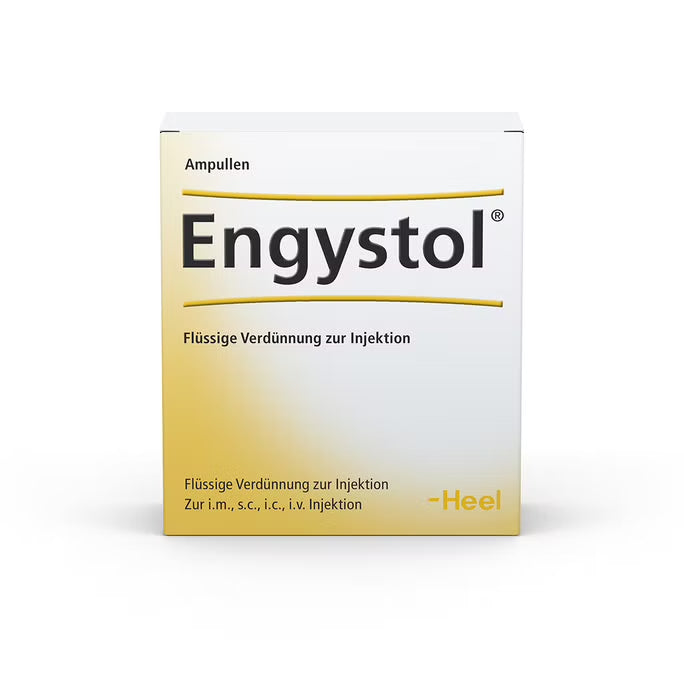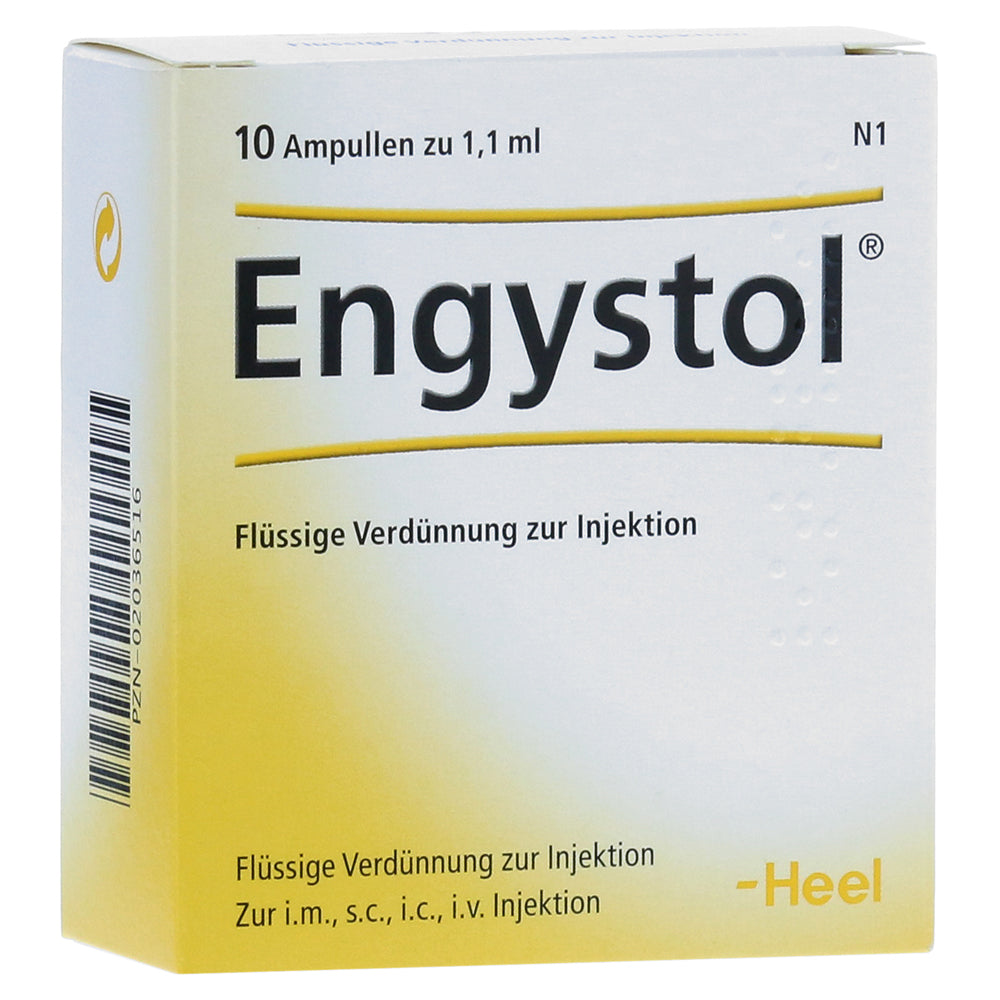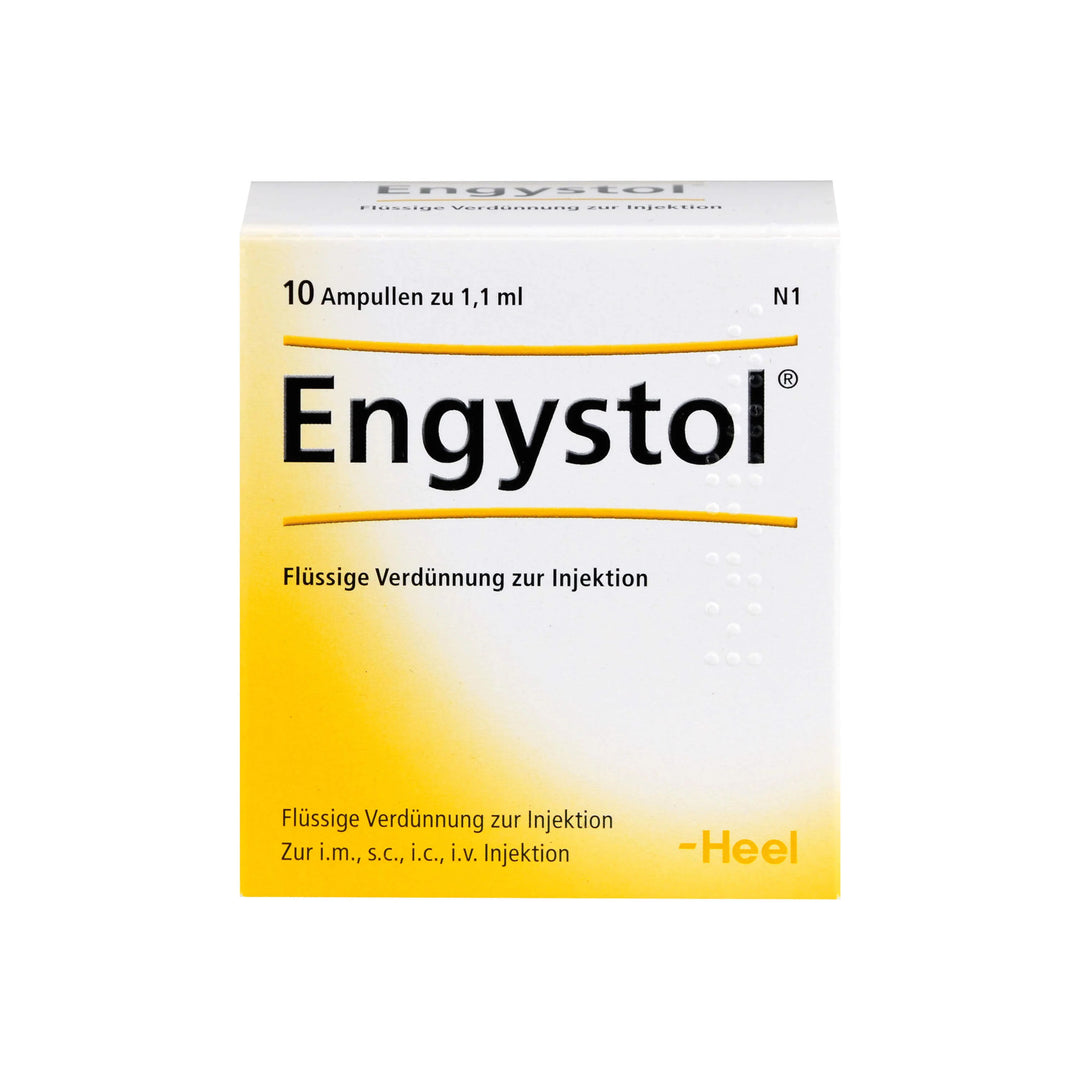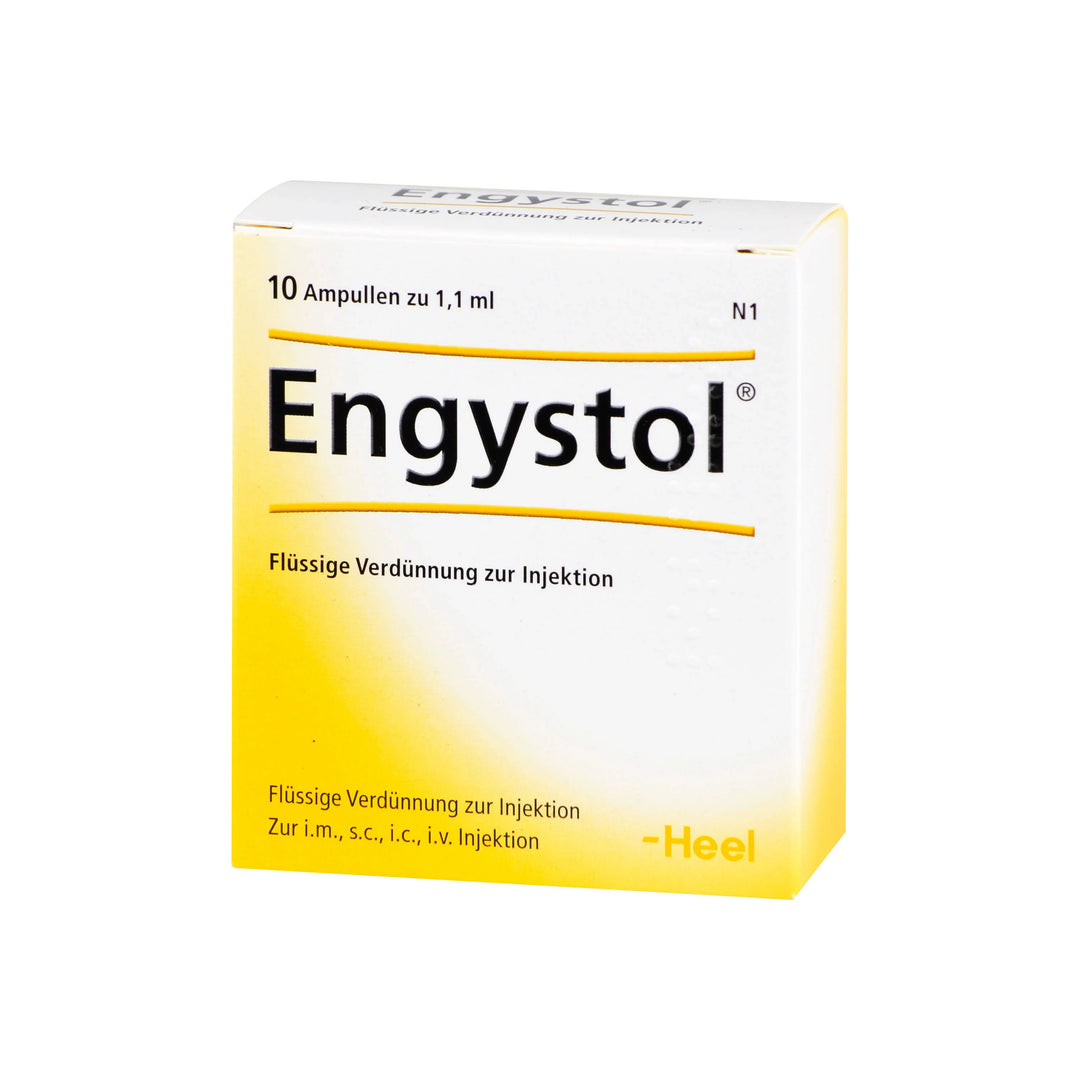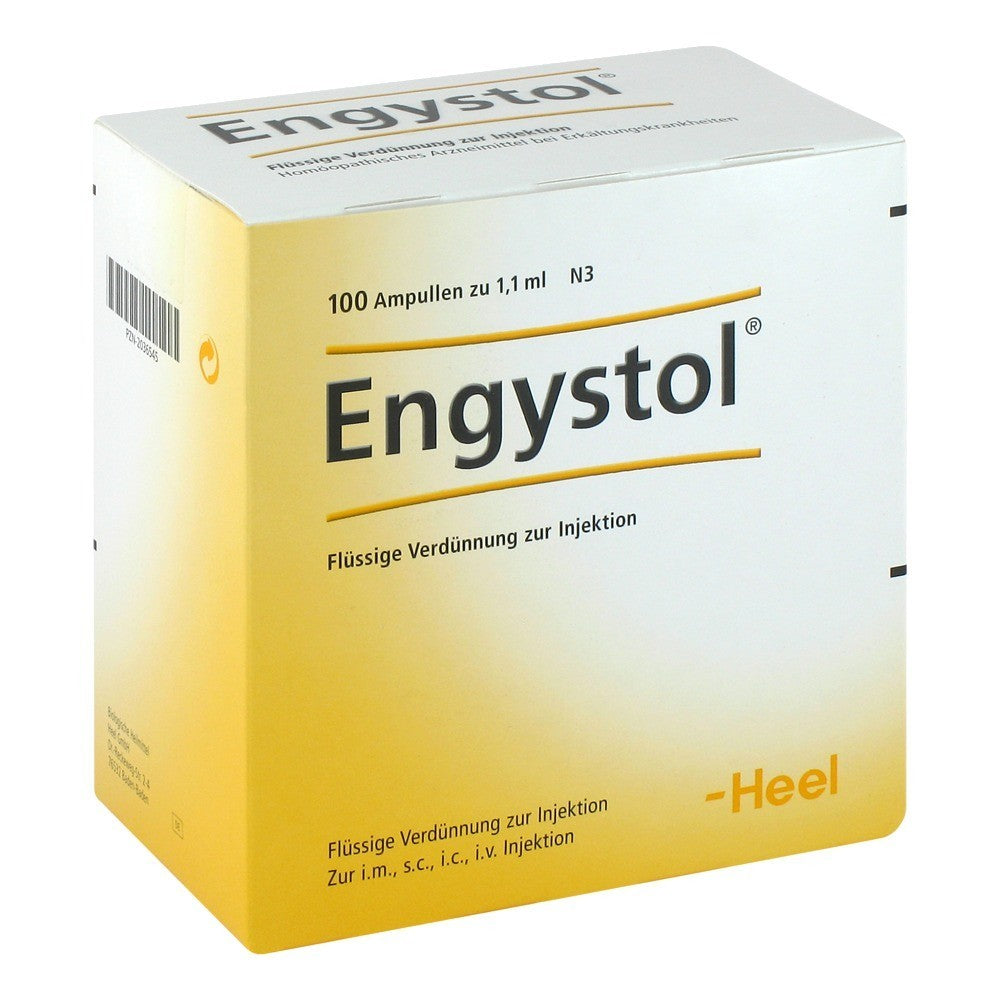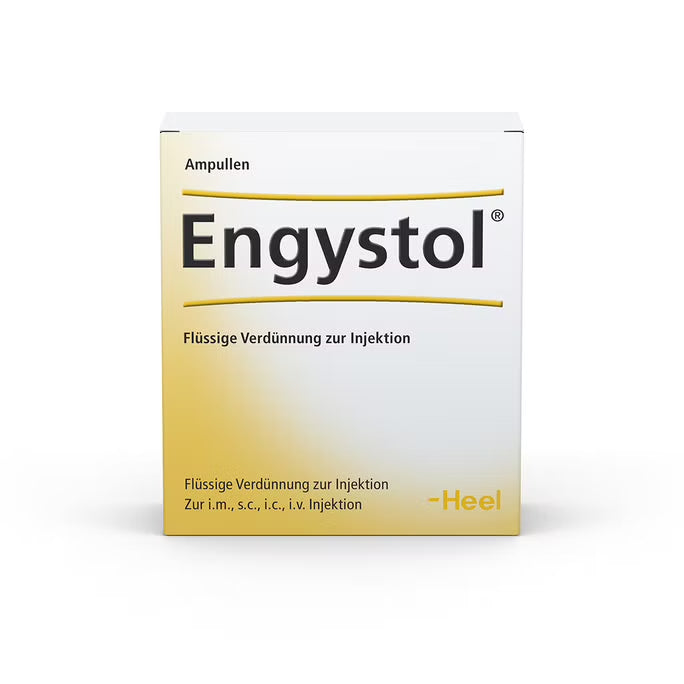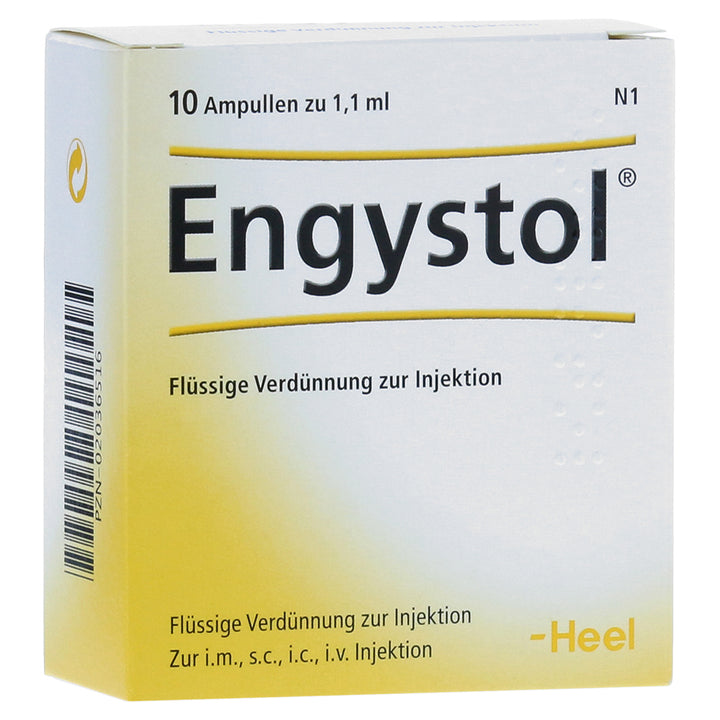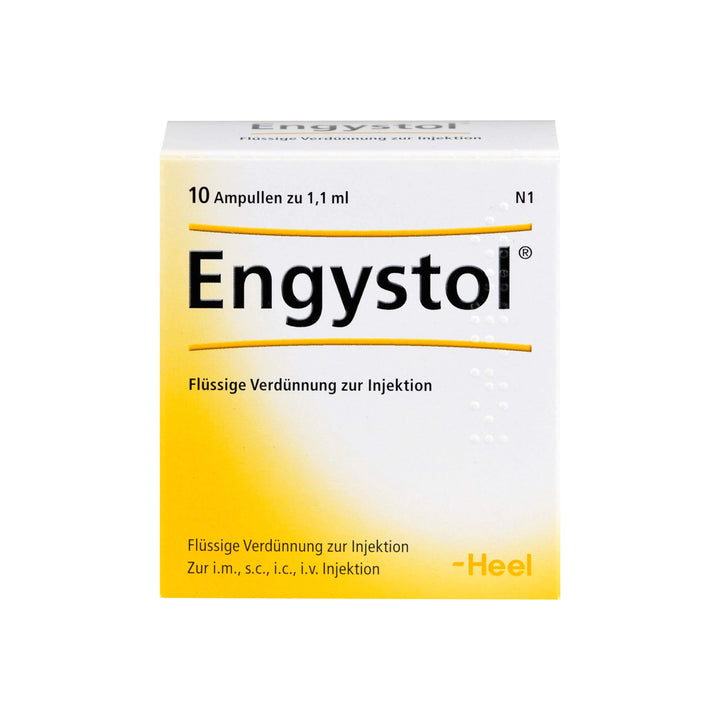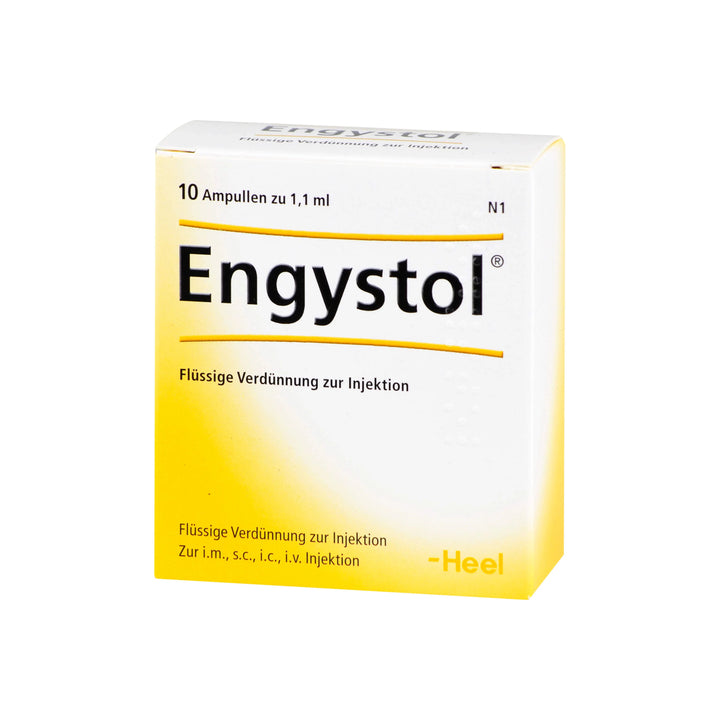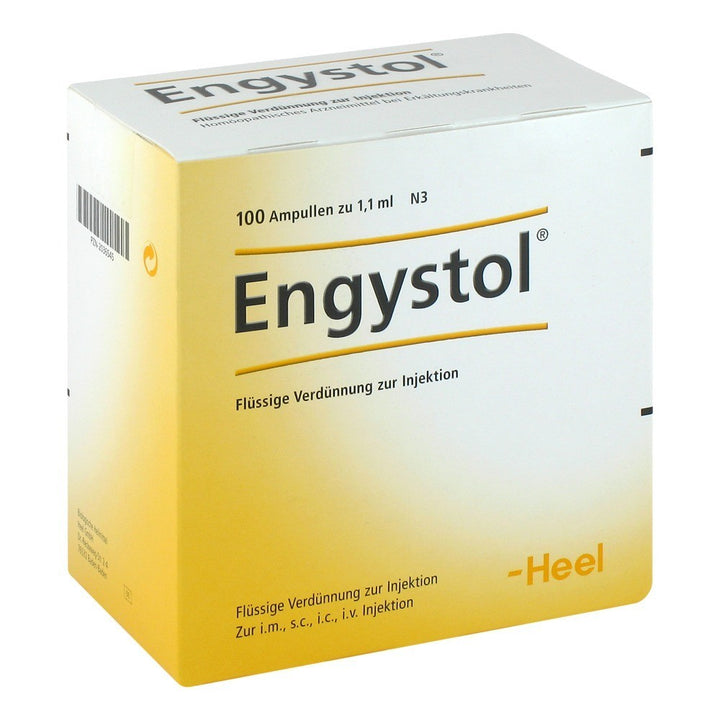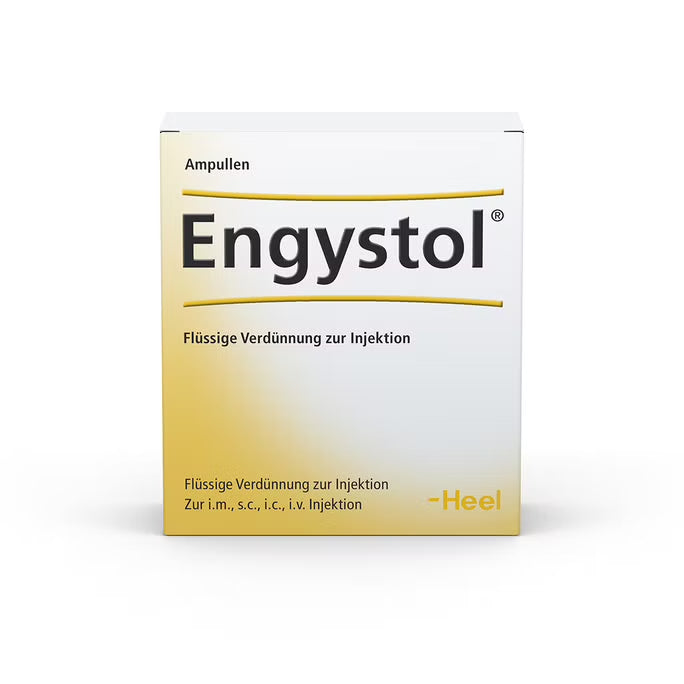Information:
- Engystol N 10 ampouless are excellent to strengthen the infection defences of the body.
- Engystol N amps can be taken after the onset of symptoms, as well as for prevention and chronic treatment.
Recommended for:
- Infections with fever
- Common Cold
- Flu
- Viral Infections
- RSV infections
- Corticosteroid-dependent asthma
Dosage:
1 oral vial 3-7 times weekly.
1 oral vial up to 3 times per day.
Otherwise: 1–3 times weekly
Solution: 1.1 ml cont.: Vincetoxicum hirundinaria D6, Vincetoxicum hirundinaria D10, Vincetoxicum hirundinaria D30 6.6 μl each; Sulfur D4, Sulfur D10 3.3 μl each.
Package Sizes
Injection solution: Packs containing 5, 10, 50 and 100 ampoules of 1.1 ml.
Pharmacological and Clinical Notes
Vincetoxicum (swallowwort)
Stimulation of the body’s own defenses with vascular and sympathetic action, e.g. in feverish viral diseases such as influenza, mumps, etc.
Sulfur (sulphur)
Reagent in all diseases; cellular activity is influenced catalytically.
Based on the individual homoeopathic constituents of Engystol N, therapeutic possibilities result for the activation of the body’s own non-specific defenses, particularly in vague feverish infections and for influenza, as well as after Roentgen irradiation and generally in viral infections of all kinds, viral influenza, viral pneumonia and viral hepatitis, as well as after vaccination (against smallpox), also stomatitis aphthosa. Many skin diseases (neurodermatitis, urticaria, pruritus simplex et vulvae, eczema, furunculosis, etc.). Diseases of the respiratory organs (bronchitis, bronchiectasis, pertussis, pneumonia and asthma), of the heart and circulation (paroxysmal tachycardia, endocarditis). Migraine, neuralgia, causalgia. Allergies of every kind and location (including hay fever) and various forms of rheumatism (including gout), of the kidneys, liver and central nervous system. Experimentally in toxoplasmosis (together with Traumeel S i.v.). Impregnation and degeneration phases in the form of therapeutical damage (in addition to the intermediary acids of the citric acid cycle).
Engystol N exerts a generally lowering action on high homotoxin levels, especially after therapeutical damage with the presence of impregnation and possibly also degeneration phases, particularly also in virus diseases, which are characterised by the penetration of the virus (homotoxin) into the cell. Here Engystol N has no direct virostatic or virocidal effect. The effect of Engystol rests, rather, on the vincetoxin which acts similarly to aconitine, and on the asclepiadic acid (constituent of Vincetoxicum officinale), with action on the vessels and sympathetic nervous system, as well as depending on colloidal sulphur, through which, by unblocking disturbed enzyme functions (sulphide enzymes), a general non-specific stimulation of the major defensive system takes place and the way is cleared for a far-reaching detoxication.
Engystol N, consequently, exercises (in a similar way to Lymphomyosot) also a channelling action on the whole mesenchyma, and particularly on the lymphatic system. This forms the foundation also for the indications of Engystol N for allergies, secondary diseases and sequelae (such as agranulocytosis, neuritis, impairment of the liver, kidneys, bone marrow and myocardium; nephritis, etc.).
In serious feverish reaction phases, e.g. sepsis, after Engystol N occasionally, at first, there is a slight worsening lasting from 3–5 hours, followed by a compensatory curative phase.
The dosage is adjusted according to the disease, the clinical picture and the stage of the illness: 1 ampoule i.m., s.c., i.v. 1–3 times weekly, possibly together with the patient’s own blood. For viral diseases: 1 ampoule i.v. daily; for small children and infants: i.m. or s.c. until an improvement is observed. For influenza, mixed injections (1 ampoule i.m., possibly with the patient’s own blood) together with Gripp-Heel (possibly 2 ampoules) and Traumeel S.



